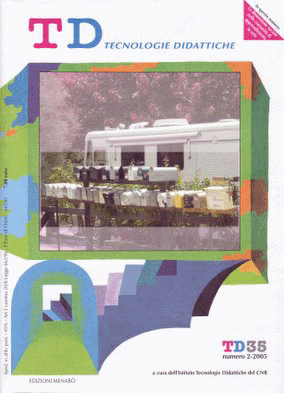The social dimension of the model of Communities of Inquiry
Main Article Content
Abstract
Article Details
Authors who publish with this journal agree to the following terms:
- Authors retain copyright and grant the journal right of first publication with the work simultaneously licensed under a Creative Commons CC BY 4.0 Attribution 4.0 International License.
- Authors are able to enter into separate, additional contractual arrangements for the non-exclusive distribution of the journal's published version of the work (e.g., post it to an institutional repository or publish it in a book), with an acknowledgement of its initial publication in this journal.
- Authors are permitted and encouraged to post their work online (e.g., in institutional repositories or on their website) prior to and during the submission process, as it can lead to productive exchanges, as well as earlier and greater citation of published work (See The Effect of Open Access)
References
Anderson T., Rourke L., Garrison D. R., Archer W. (2001), Assessing teaching presence in a computer conferencing context, Journal of Asynchronous Learning Networks , vol. 5, n. 2
Austin J. L. (1962), How to do things with words, Harvard University Press, Cambridge, MA (tr. it., Come fare cose con le parole, Marietti, Genova, 1987)
Bruner J. S. (1997), La cultura dell’educazione, Feltrinelli, Milano
Capozzoli M., McSweeney L., Sinha D. (1999), Beyond kappa: A review of interrater agreement measures, The Canadian Journal of Statistics, vol. 27, n. 1, pp. 3-23
De Bruyn L. (2004), Monitoring online communication: can the development of convergence and social presence indicate an interactive learning environment?, Distance Education, vol. 25, n. 1, pp. 67-81
Garrison D. R., Anderson T. (2003), E-Learning in the 21st century, Routledge Falmer, London, UK
Garrison D. R., Anderson T., Archer W. (1999), Critical inquiry in a text-based environment: computer conferencing in higher education, The Internet and Higher Education, vol. 2, n. 2-3, pp. 87-105
Garrison D. R., Anderson T., Archer W. (2001), Critical thinking, cognitive presence, and computer conferencing in distance education, American Journal of Distance Education, vol. 15, n. 1, pp. 7-23
Herring S. C. (2004), Computermediated discourse analysis. An approach to researching online behavior, in S. A. Barab, R. Kling, J. H. Gray (eds.), Designing for virtual communities in the service of learning, Cambridge University Press, Cambridge, UK, pp. 338-376
Hillman D. C., Willis D. J., Gunawardena C. N. (1994), Learner-interface interaction in distance education: An extension of contemporary models and strategies for practitioners, The American Journal of Distance Education, vol. 8, n. 2, pp. 30-42
Krippendorff K. (2003), Content analysis: an introduction to its methodology, Sage Publications, Thousand Oaks, CA
Krippendorff K. (2004), Reliability in content analysis. Some common misconceptions and recommendations, Human Communication Research, vol. 30, n. 3, pp. 411-433
Meyer K. (2004), Evaluating online discussions: Four difference frames of analysis, Journal of Asynchronous Learning Networks, vol. 8, n. 2, pp. 101-114
Moore M. (1989), Editorial: Three types of interaction, The American Journal of Distance Education, vol. 3, n. 2, pp.1-7
Rourke L., Anderson T. Garrison D. R., Archer W. (1999), Assessing social presence in asynchronous, text-based computer conferencing, Journal of Distance Education, vol. 14, n. 2, pp. 51-70
Rourke L., Anderson T., Garrison D. R., Archer W. (2001), Methodological issues in the content analysis of computer conference transcripts, International Journal of Artificial Intelligence in Education, n. 12, pp. 8-22
Tajfel H., Turner J. C. (1986), The social identity theory of intergroup behaviour, in S. Worchell, W. G. Austin (eds.), Psychology of intergroup relations, Nelson- Hall, Chicago, pp. 7-24
Wang M. (2004), Correlational analysis of student visibility and performance in online learning, Journal of Asynchronous Learning Networks, vol. 8, n. 4
Wenger E. (1998), Communities of practice. Learning, meaning, and identity, Cambridge University Press, Cambridge, UK

